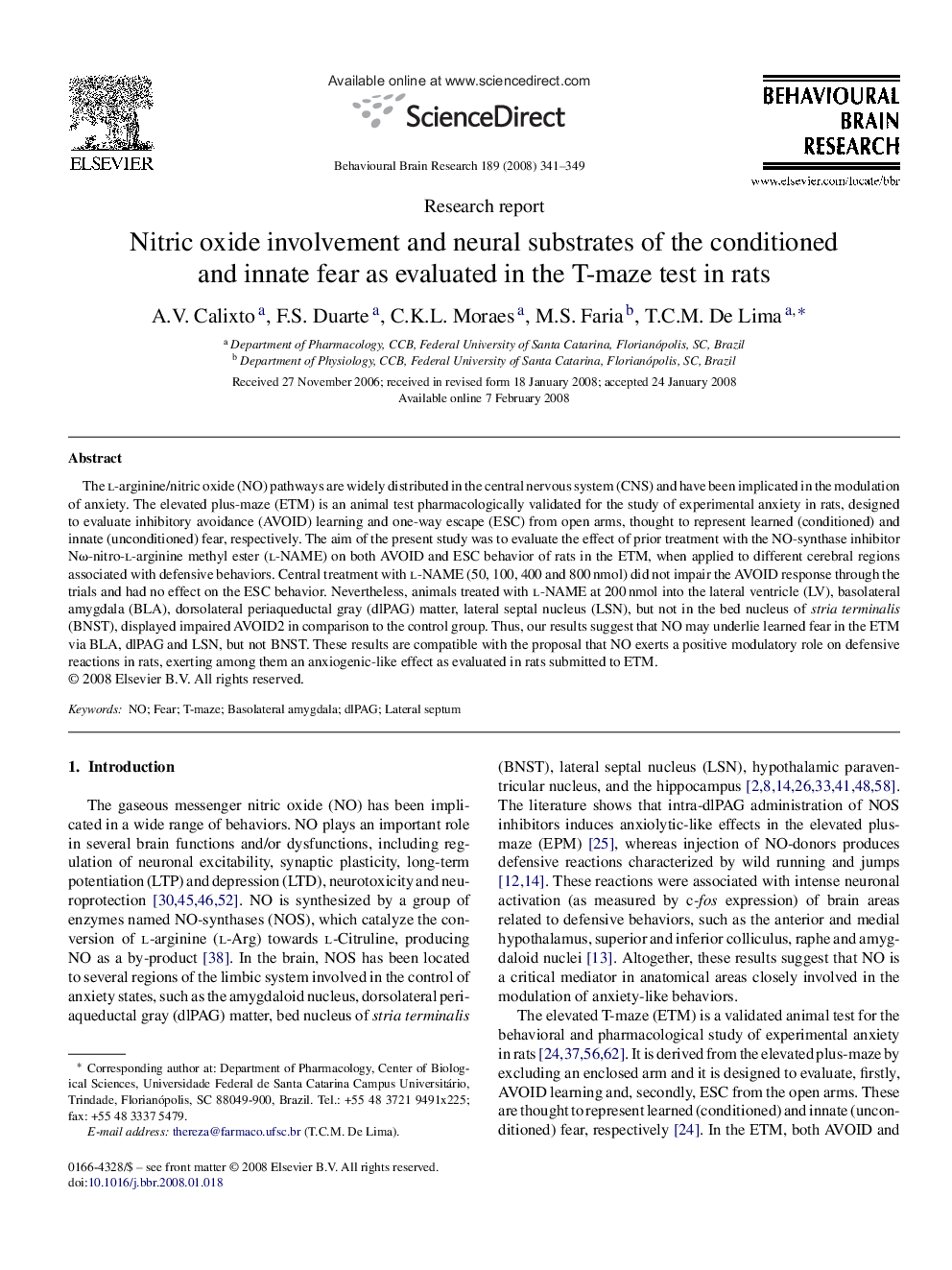| Article ID | Journal | Published Year | Pages | File Type |
|---|---|---|---|---|
| 4315261 | Behavioural Brain Research | 2008 | 9 Pages |
The l-arginine/nitric oxide (NO) pathways are widely distributed in the central nervous system (CNS) and have been implicated in the modulation of anxiety. The elevated plus-maze (ETM) is an animal test pharmacologically validated for the study of experimental anxiety in rats, designed to evaluate inhibitory avoidance (AVOID) learning and one-way escape (ESC) from open arms, thought to represent learned (conditioned) and innate (unconditioned) fear, respectively. The aim of the present study was to evaluate the effect of prior treatment with the NO-synthase inhibitor Nω-nitro-l-arginine methyl ester (l-NAME) on both AVOID and ESC behavior of rats in the ETM, when applied to different cerebral regions associated with defensive behaviors. Central treatment with l-NAME (50, 100, 400 and 800 nmol) did not impair the AVOID response through the trials and had no effect on the ESC behavior. Nevertheless, animals treated with l-NAME at 200 nmol into the lateral ventricle (LV), basolateral amygdala (BLA), dorsolateral periaqueductal gray (dlPAG) matter, lateral septal nucleus (LSN), but not in the bed nucleus of stria terminalis (BNST), displayed impaired AVOID2 in comparison to the control group. Thus, our results suggest that NO may underlie learned fear in the ETM via BLA, dlPAG and LSN, but not BNST. These results are compatible with the proposal that NO exerts a positive modulatory role on defensive reactions in rats, exerting among them an anxiogenic-like effect as evaluated in rats submitted to ETM.
